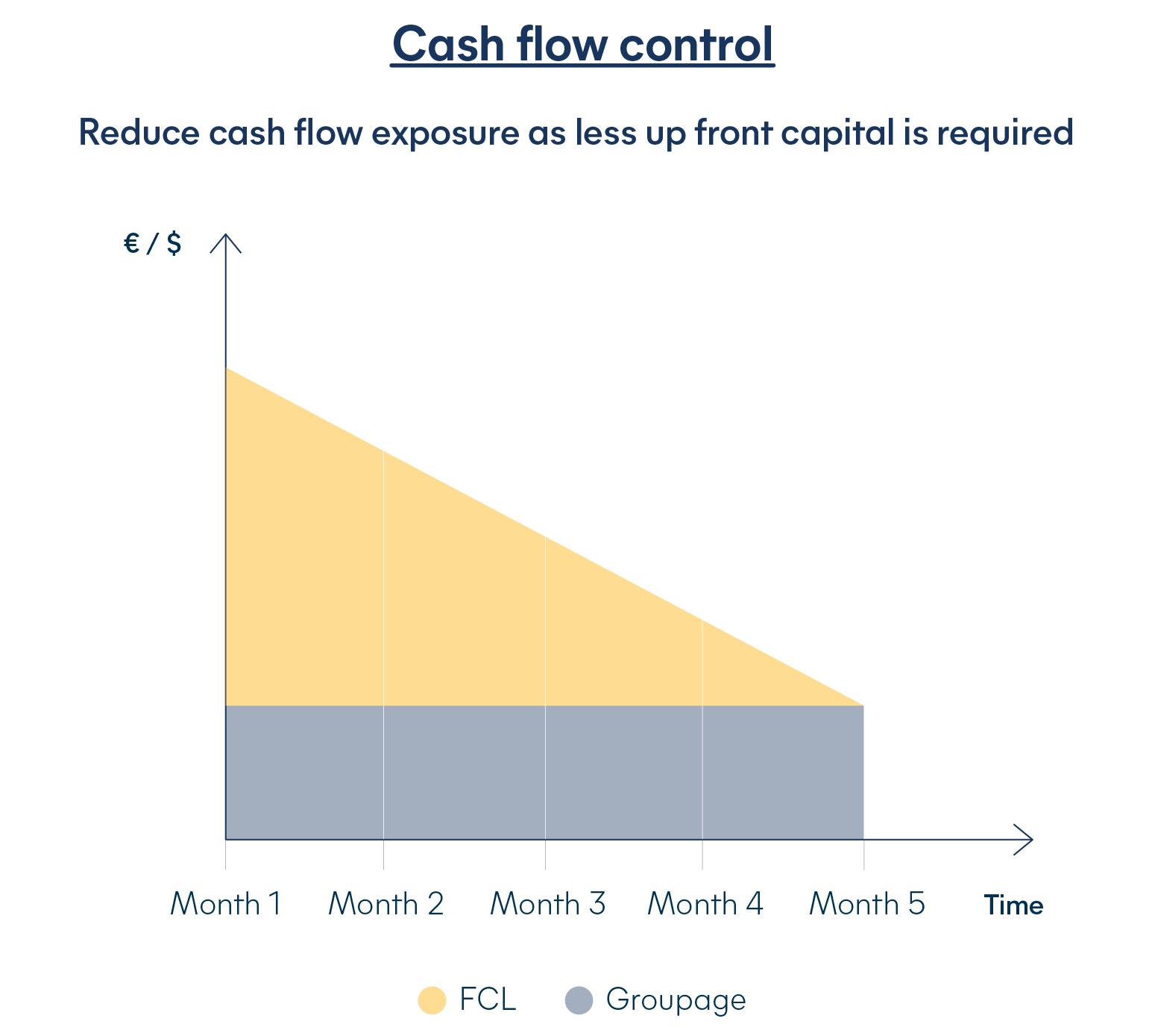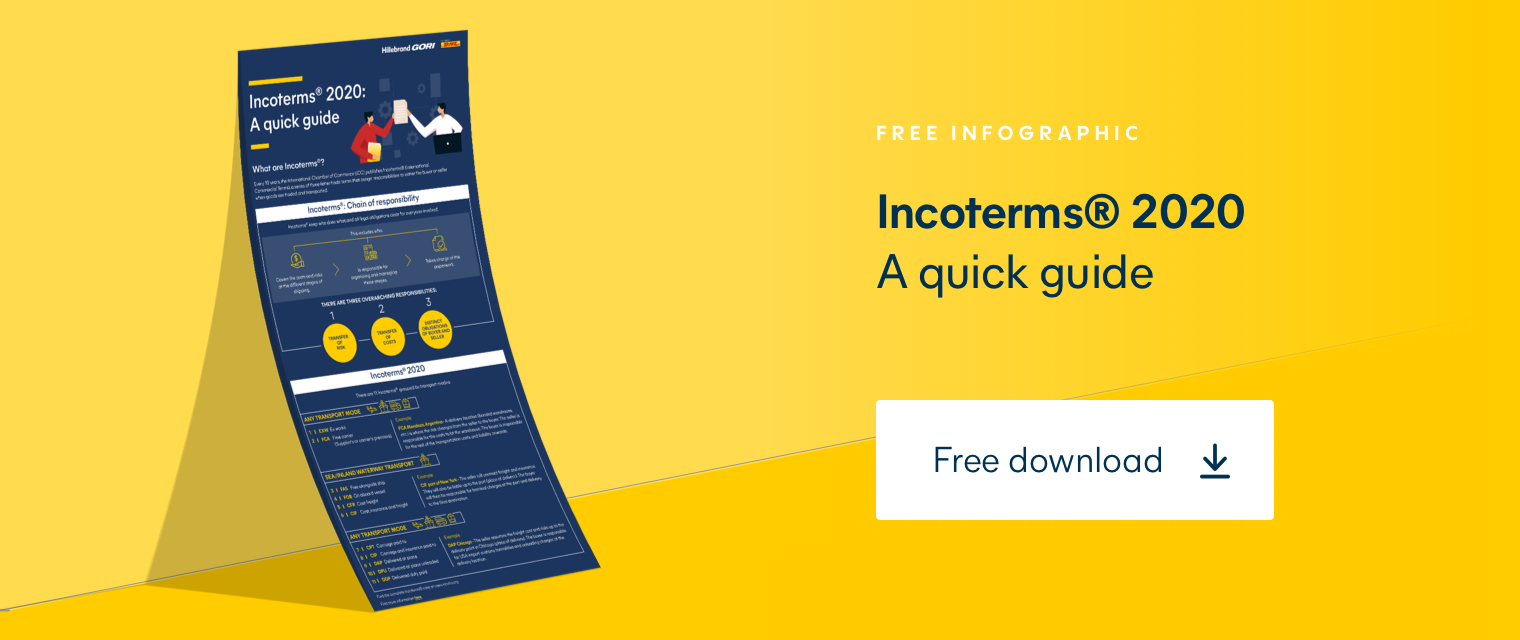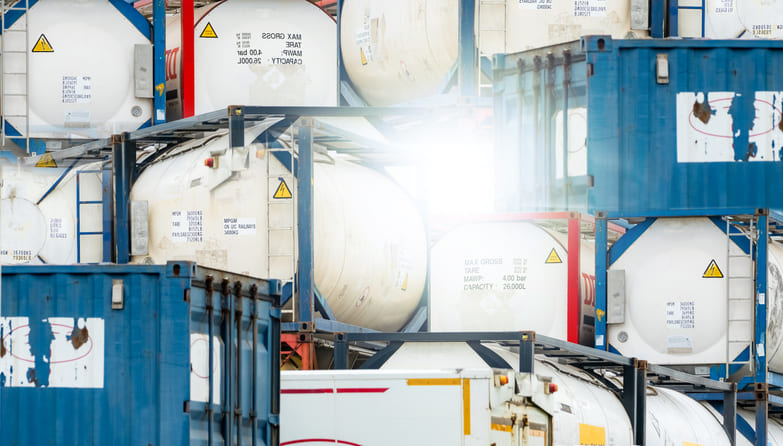Groupage: Shipping less, more often, will save you money
In our recent blog article, “Groupage vs. Full Container Load”, we looked at the differences between these two global logistics services and the benefits associated to each of them. For the purposes of this article, we’ll focus on a specific example of how groupage shipping actually works in comparison to full load shipping.
What is groupage shipping?
Groupage shipping is the term used when two or more companies share space in a container to keep costs down. This type of shipping is also called LCL (less than container load) shipping.
With groupage, your goods are consolidated with those of other shippers into one container, which is then sent on its way. This is in contrast to full container load (FCL) shipping, where you would have the entire container to yourself.
The main benefit of groupage shipping is that it allows companies to send smaller shipments at a lower cost. It’s also a more flexible option, as you can ship goods as and when you have them, rather than waiting until you have a full container’s worth.
Another benefit of groupage shipping is that it can be quicker than FCL shipping, as your goods don’t have to wait around for a full container to be filled up before it can be sent.
So let’s imagine you sell two pallets of a specific wine each month to customers. To fulfill that demand, you usually move one full load (20-foot container) of ten pallets every five months. That’s a good idea, isn’t it? One shipment planned and paid for spreads the cost of shipping per pallet, and you have five months of stock stored locally for when you need it.
Why then should you consider groupage shipping two pallets every four weeks instead? Sounds like more hassle, doesn’t it? But have you really looked at what it can do for your business, especially now with the state of the shipping industry?

How groupage shipping saves on warehousing costs
Two pallets take up less space than ten pallets, which means they cost five times less to store them. Depending on location and free space, you may not even need a warehouse at all for this quantity. You also might not need a temperature controlled facility, as some wines can be protected from the elements and thermal changes with Hillebrand’s pallet sized insulation liners.
Maybe something else to consider is that while your pallets are in transit, they are effectively being “stored” for free. Factoring in the journey time to your shipment planning will also help you manage the cost of your logistics supply chain.

Example of how monthly groupage shipments can reduce costs and improve cash flow
Respond to consumer trends faster
By having two pallets in stock you can adapt your product range with your next two pallet orders. You’ll not need to wait for the sale of ten pallets. This means you can offer your customers new labels or vintages faster and not be forced to sell older stock at a reduced price to clear them out of the warehouse.
Spend cash more freely
Shipping two pallets instead of ten requires far less capital to be invested upfront. The cost of the product, shipping, taxes, VAT, storage etc., remains at your disposal and not tied up in stock waiting to be sold.
Hillebrand’s beverage-only groupage services are operated at fixed shipping frequencies. So, the flow of goods through your supply chain will be regular and ongoing. If you want to “feel safer,” you may decide to place orders for three pallets instead of two, the benefits of groupage vs. full container remain the same.
Read more information on our dry, insulated and temperature-controlled groupage services, view our sailing schedules and or request a quote.





